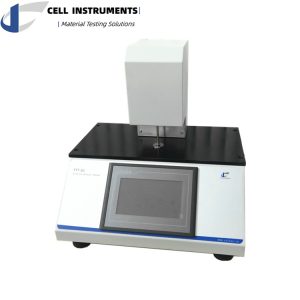Importance and Instrument of Food Package Testing
5 Reasons Why Packaging Is Important For Food
Let’s consider the importance of food packaging through an example:
Imagine you’re buying fresh produce, say strawberries, from the supermarket. Without proper packaging, these strawberries are susceptible to damage, bruising, and spoilage during transportation and handling. However, if they are packaged in a sturdy container, such as a clamshell or a plastic punnet, they will remain intact.
The packaging serves several critical purposes:
1. Protection
Packaging shields the strawberries from physical damage, reducing bruising and preserving their freshness. This protection extends the shelf life of the strawberries, ensuring they remain appealing to consumers for a longer period.
2. Hygiene
Packaging helps maintain the hygiene and cleanliness of the product. It acts as a barrier, preventing contamination from external sources such as dirt, dust, or bacteria during transportation and storage.
3. Information and Branding
Packaging provides essential information to consumers, including nutritional facts, expiration dates, and product origin. It also serves as a platform for branding and marketing, helping consumers identify and choose products based on their preferences and values.
4. Convenience
Packaging facilitates convenience for consumers by offering easy-to-handle portions and storage options. For instance, a resealable bag allows consumers to consume a portion of strawberries and store the rest for later without compromising freshness.
5. Prevent Tampering
Food packaging plays a crucial role in preserving food quality, ensuring hygiene and safety, providing essential information to consumers, enhancing convenience, and preventing tampering. It is not merely a means of transportation but an integral part of the food supply chain that significantly impacts the quality and accessibility of food products.
Instruments Related to Food Packaging Testing
Mechanical and physical properties are crucial for ensuring that food packaging can withstand various stresses and strains encountered during handling, transportation, and storage.
The following are some test items commonly used in food packaging quality testing:
Thickness for Food Package Testing
Measurement of the thickness of the packaging material using specialized equipment such as micrometers or thickness gauges. This ensures consistency in material thickness, which is critical for food packaging.
Recommended instruments
Tensile Strength for Food Package Testing
This measures the maximum force that a material can withstand when stretched or pulled before breaking. It helps determine the overall strength and durability of the food packaging material.
Recommended instruments

TST-01 Tensile Tester
Tear Resistance for Food Package Testing
This assesses the ability of the packaging material to resist tearing when subjected to an external force. It is particularly important for flexible packaging materials such as plastic films and foils.
Recommended instruments

SLD-01 Tear Tester
Puncture Resistance for Food Package Testing
This measures the ability of the packaging material to withstand puncture forces, such as those caused by sharp objects or impact during handling and transportation.
Recommended instruments

TST-01 Tensile Tester and Puncture Testing Item Fixture
Compression Strength for Food Package Testing
This evaluates the ability of the packaging material to withstand compressive forces, such as those experienced during stacking or when heavy items are placed on top of the packaging.
Recommended instruments

PCT-01 Packaging Compression Tester
Flexibility for Food Package Testing
This assesses the flexibility of the packaging material, which is important for determining its ability to conform to the shape of the packaged product and withstand bending or folding without breaking.
Recommended instruments

GFT-01 Flex Durability Tester
Impact Resistance for Food Package Testing
This measures the ability of the packaging material to absorb and dissipate energy when subjected to sudden impacts, such as drops or collisions during handling.
Recommended instruments

FDT-01 Falling Dart Impact Tester
By testing these items, food packaging manufacturers can ensure that food packaging materials are strong, durable, and capable of protecting the contents from damage throughout the supply chain, thereby maintaining product quality and safety.
For more information on testing instruments, please contact us Cell Instruments.

